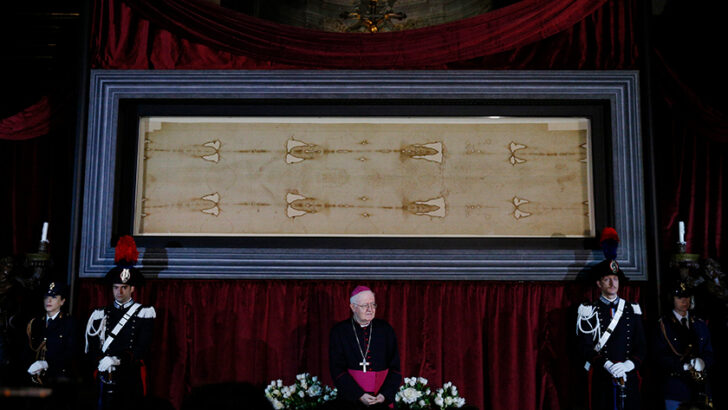For centuries Christians have attributed a first-century date to the Shroud of Turin. Nuclear engineer Robert Rucker says that his latest research on the shroud verifies that.
“The Shroud of Turin is the second-most valuable possession of the human race next to the Bible itself,” Mr Rucker told CNA. The shroud is currently preserved in the Chapel of the Holy Shroud adjacent to St John the Baptist Cathedral in Turin (Torino), Italy.
For more than 10 years, Mr Rucker has studied the physics of the disappearance of the body of Jesus and its imprint on the shroud. His website, Shroud Research, challenges conclusions that the shroud dates to the period of 1260 to 1380 AD, leading sceptics to conclude it is a medieval fake.
In 1988, scientists used tiny samples snipped from the shroud to determine the amount of carbon 14 isotopes they contained, destroying the samples in the process. The radioactive carbon 14 isotope is a variant of carbon-containing excess neutrons, which are particles smaller than atoms. Over time, carbon 14 decays into nitrogen 14 in organic materials such as bone and plant matter. The ratio of carbon 14 atoms remaining in a sample provides the data needed to estimate the sample’s age.
Mr Rucker said his calculations show that the 1988 carbon 14 dating is erroneous because it does not take into account the radiation emitted from Jesus’ body at the resurrection, which included neutrons that were absorbed by the shroud and formed new carbon 14 atoms, thus leading to a misinterpretation of the data.
“Carbon 14 dates can be vastly wrong if something has changed the ratio of c-14 to c-12 in the sample, other than the decay of the carbon 14,” Mr Rucker explained. “There have been six different explanations for the carbon date of 1260-1380.
The first explanation was in a letter to the editor of Nature magazine in 1989. Tom Philips, who holds a PhD in particle physics, suggested to Nature that the most obvious explanation is that new carbon 14 atoms were produced by neutron absorption” in the shroud.
“That proposal,” Mr Rucker said, “was never followed up on until I did the nuclear analysis computer calculations in 2014”.
Mr Rucker will offer a workshop about his research on October 6-7 at St Thomas the Apostle Parish and the University of Michigan in Ann Arbor, Michigan. He earned his bachelor’s and master’s degrees at the University of Michigan-Ann Arbor as well as professional engineering certificates in nuclear engineering and mechanical engineering.


 Archbishop Cesare Nosiglia of Turin, Italy, is pictured in front of the Shroud of Turin in the Cathedral of St John the Baptist in this 2015 file photo. Photo: CNS/Paul Haring
Archbishop Cesare Nosiglia of Turin, Italy, is pictured in front of the Shroud of Turin in the Cathedral of St John the Baptist in this 2015 file photo. Photo: CNS/Paul Haring 